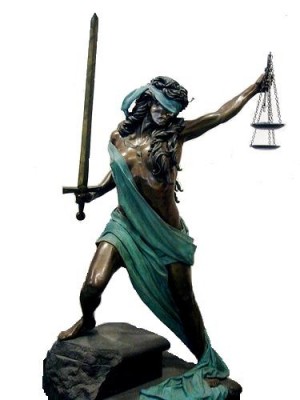An Australian experience of a State prosecutor in action and an illustration of how a case should be prosecuted.

Art Harun’s commentary upon the operation of the fourfold institutions of justice makes an important point. In that connection, a recent experience of mine may be instructive.
Some years ago, I was on a jury in a homicide trial in Sydney, Australia. My fellow jurors were much taken with the acuity, the verve and the decisiveness of the defence lawyer.
By contrast, they saw the Crown Prosecutor as rather weak and ineffective, a “stumblebum” in the local dialect here. I felt otherwise, I saw something else.
Reading between the lines, as the trial went on, I could recognise a considerable reluctance, on the part of both the Public Prosecutor’s office and also the police, to bring the prosecution.
But, because of the circumstances surrounding the event, there had clearly been strong local community pressure that there be a prosecution, that a trial be held.
There was accordingly a public interest in putting the case to a jury, to allow a group of citizens to assess the evidence. If the case was to be dismissed, far better that it be rejected by them, rather than held back from the courts by reluctant police and unconvinced prosecutors whose motives might remain a matter of suspicion and continuing community resentment.
So the case was put, a trial was held. But in a court some distance away from where the event had occurred, in an area that drew upon a different pool of jurors who would not come with their own preconceived ideas of the circumstances and who would not share those strong community attitudes towards the event and the personalities involved in it.
In that context I could see that the Crown Prosecutor was doing his job with exemplary professionalism.
He put the case as strongly as it deserved to be put on its merits – but no more strongly than that.
He evidently refused to “push things harder”, for extraneous reasons of personal ego or institutional zeal, than the facts of the case or the interests of justice warranted.
I asked myself at the time whether the same restraint, that same sense of ethical propriety and that principled and dispassionate professionalism would have been shown in other court systems that I have seen at work, in the US and England.
Unlike my fellow jurors, I had nothing but respect for that Crown Prosecutor.
My view that the accused should be acquitted was based upon the evidence and upon my high regard for the ethical behaviour of the prosecutor. He had done his job no less thoroughly than the incisive, and outwardly more stylish and impressive, defence counsel.
I could find no fault with his performance, professionally or ethically. He had made, undramatically, the strongest case that could reasonably be put. He made the best of what he had in hand.
He won my admiration.
In the very best way, each in accordance with his duly appointed role, both he and the defence lawyer served the cause of justice. That was what mattered. That was what prevailed.
For everybody concerned it was a “win”.
Clive S. Kessler is Emeritus Professor of Sociology & Anthropology at The University of New South Wales, Sydney.

Comments are closed.